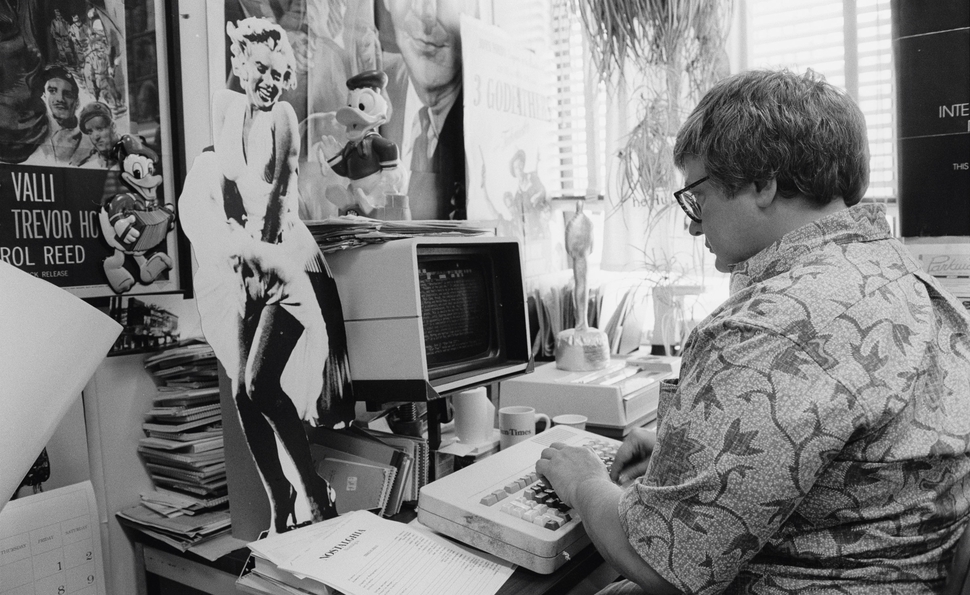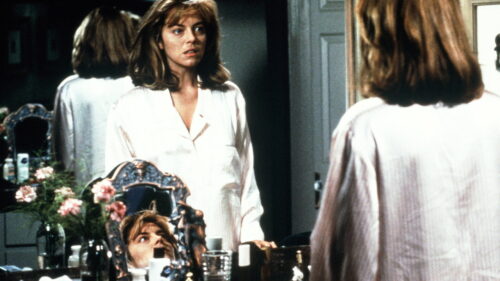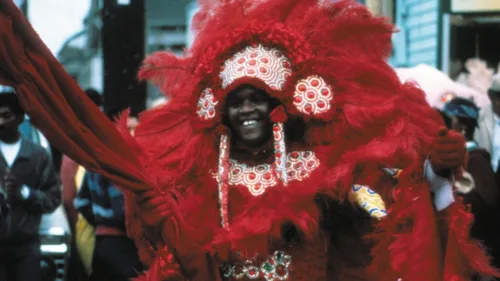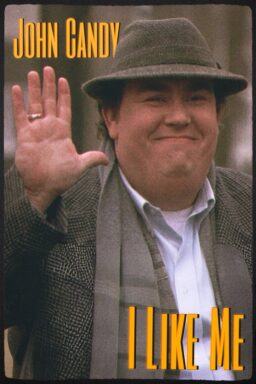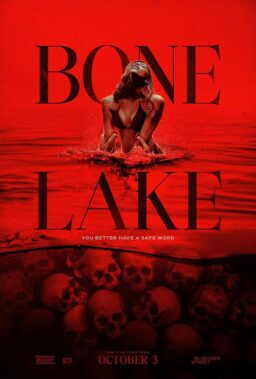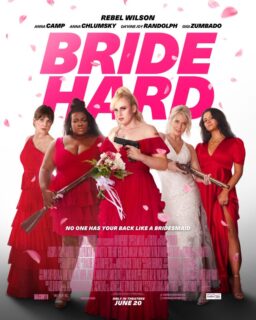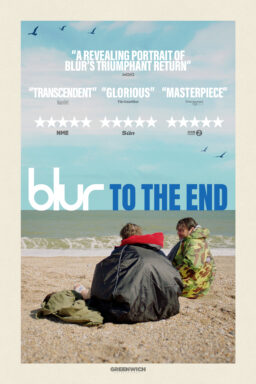To donate to The Ebert Center, click here.
It felt right to commemorate the second
anniversary of Roger Ebert’s passing with a celebration of his work. The entire
front page of the site—which makes space for 13 reviews—is hereby given over to
Roger today and tomorrow. We’ve tried to select pieces that give a sense of the
length of his career and the breadth of his talent.
You’ll see a reviews here that you’ve encountered or heard quoted many
times, and some others that you’ve never seen before. Taken together, we hope they’ll give a sense of the totality of what he represented. While Roger’s work
was quotable, it was much more than that. His reviews say a lot in few
words. He had a knack for finding the essence of a film in a fairly tight
space, and for making singular observations that lodged in your mind long after
you’d read the piece, sometimes to the point where it became impossible to
watch or think about a particular movie without remembering what Roger said
about it.
“Galia” (April 7, 1967)
This is the first review Roger ever published
in a professional newspaper. He was 24. The opening
paragraph is vintage Roger, situating the film within the context of
then-current trends in filmmaking while also giving you a sense of how those
same trends were becoming tired through shallow misuse: “Georges Lautner’s Galia opens and closes
with arty shots of the ocean, mother of us all, but in between it’s pretty
clear that what is washing ashore is the French New Wave.“

“Bonnie and Clyde” (September 25,
1967)
One of Roger’s most famous early
reviews was of “Bonnie and Clyde,” a sardonic and tonally daring take
on a Depression-era crime spree that spoke directly to the spirit of the
late-’60s counterculture. Written by Robert Benton and directed by Arthur Penn,
the movie mixed jaunty populist anti-establishment comedy and shocking
brutality in a way that felt new. Although it was later treated as a milestone
and a masterpiece—a consensus classic—it was off-putting to many mainstream
critics at the time; few reviewers of any profile supported it with great enthusiasm.
The New Yorker‘s Pauline Kael was one. Roger was another. His review gives a
powerful sense of the movie’s unique energy—nobody who saw the film after
reading this could plausibly claim that he didn’t warn them what they were
getting into. But it also bridges the gap between straightforward,
consumer-oriented reviewing and the kind practiced in The New Yorker, The
Village Voice and Film Comment. In plain language, it explores
the film’s aesthetics, and connects them to what was going on at that moment
in the United States during an especially tumultuous decade, when violent
antiwar protests and bloody images from Vietnam were appearing in mainstream
newspapers and magazines and on TV screens.
“When
people are shot in ‘Bonnie and Clyde,’ they are literally blown to bits,”
Roger wrote. “Perhaps that seems
shocking. But perhaps at this time, it is useful to be reminded that bullets
really do tear skin and bone, and that they don’t make nice round little holes
like the Swiss cheese effect in Fearless Fosdick. We are living in a period
when newscasts refer casually to ‘waves’ of mass murders, Richard Speck’s
photograph is sold on posters in Old Town and snipers in Newark pose for Life magazine (perhaps they are
busy now getting their ballads to rhyme). Violence takes on an unreal quality.
The Barrow Gang reads its press clippings aloud for fun. When C.W. Moss takes
the wounded Bonnie and Clyde to his father’s home, the old man snorts: ‘What’d
they ever do for you boy? Didn’t even get your name in the paper.’ Is that a
funny line, or a tragic one?“
“Persona”
(November 6, 1967)
On the heels of his “Bonnie and Clyde” review, Roger published an
evaluation of Ingmar Bergman’s “Persona,” which might have been the Swedish
filmmaker’s most thematically and aesthetically daring work up to that point,
which is saying a lot. It was, by any measure, a difficult film for viewers
accustomed to conventional Hollywood stories and techniques; it’s still not an
easy sell, as any film professor today will tell you. But Roger eases the viewer
into Bergman’s mindset in a no-fuss way, explaining what the director is up to
in an accessible way that still preserves the mystery of the film’s effects.
“Most movies try to seduce us into
forgetting we’re ‘only’ watching a movie,” he writes, “But Bergman keeps reminding us his story
isn’t ‘real.’ At a crucial moment in his plot the film seemingly breaks, and
after it rips for a dozen frames it seems to catch fire within the projector.
We see it melting on the screen. Then blackness, then light and then the old
silent comedies again, as ‘Persona’ starts again at the beginning.“
“Who’s That Knocking at My Door?” (March 17, 1969)
This
is, to paraphrase “Casablanca,” the beginning of a beautiful
friendship. Roger was an early champion of Martin Scorsese—you can sense his
joy at publishing a regular review of a movie he first saw at the Chicago Film
Festival two years earlier—and when you read his review of “Who’s That Knocking
At My Door?” you can see why the director’s work spoke to him; why they
became close friends and stayed close even when Roger didn’t like his movies
(as was the case with “The Color of Money“); and why Roger would
eventually write an entire book about Scorsese and his films (2008’s “Scorsese by
Ebert“).
The
director and the critic shared certain life experiences, including a Catholic
upbringing and a youthful tendency to fear and/or idealize women, and perhaps
as a result, some passages here sound like bits and pieces of an
as-yet-unpublished memoir, or one of the tough-yet-lyrical, journalism-influenced
American writers that Roger loved so much: “[W]e enter a world of young Italian-Americans in New York City who sit
around and kill time and look at Playboy and
cruise around in a buddy’s car listening to the Top 40 and speculating
aimlessly about where the action is, or might be, or ever was. Occasionally on
Saturday night they get together at somebody’s apartment to drink beer,
watch Charlie Chan in a stupefied daze and listen to some guy who says he knows
two girls whom he might be able to call up. In this world, still strongly under
a repressive moral code, there are two kinds of girls: nice girls and broads.
You try to make the broads and you place the nice girls on an inaccessible,
idealized pedestal.” More intriguing still is an observation buried at
the end of the second paragraph, which may seem prescient to those who like
Scorsese’s early movies better than his later ones: “It is possible that with more experience and maturity Scorsese will
direct more polished, finished films–but this work, completed when he was 25,
contains a frankness he may have diluted by then.“

“3 Women” (March 15, 1977)
Coincidentally,
this review of one of Robert Altman’s masterpieces invokes Ingmar Bergman’s
“Persona” (see above), and showcases Roger, then ten years into his
career, easing into his role as American film criticism’s preeminent explainer,
masterfully giving viewers a sense of what kind of movie they’re about to see,
what they should notice about it, and why they should care about it. As in many reviews of Roger’s favorite films,
the filmmaking process and the director’s awareness of it are never far from
the writer’s mind, and yet these concerns never edge out Roger’s dogged
determination to tell us what the film is about, who the characters are, and what
it feels like to watch it. “The
movie’s story came to Altman during a dream, he’s said, and he provides it with
a dreamlike tone,” he writes. “The plot connections, which sometimes make little literal sense, do
seem to connect emotionally, viscerally, as all things do in dreams.”
“Blue Velvet” (September 19, 1986)
Roger’s
review of David Lynch’s “Blue Velvet” is often quoted by people who
never cared for Roger’s work, or who admired aspects of it but were frustrated
when he made what they considered bad calls on films that many considered great
or important. “Blue Velvet” was and remains a hugely influential
movie, a formative influence on more directors, films and television series
than can be listed here, but Roger just flat-out didn’t like it, because he
thought its scenes of “stark sexual
despair” were undercut by Lynch’s tendency to “[deny] the strength of his material or
trying to defuse it by pretending it’s all part of a campy in-joke.”
He was particularly incensed by the sexual abasement of the heroine, played by
Isabella Rossellini. “Rossellini
goes the whole distance, but Lynch distances himself from her ordeal with his
clever asides and witty little in-jokes. In a way, his behavior is more
sadistic than the Hopper character.” I don’t necessarily agree with
Roger myself, but every time I see “Blue Velvet”—indeed any film or
TV program in which women are sexually abused or humiliated—I think of this
review, which is not at all a bad thing.
“Do the Right Thing” (June 30, 1989)
Justly
regarded as one of Roger’s best and most significant reviews, this one spoke up
loudly and passionately on behalf of Spike Lee’s race-tinged urban drama,
praising it as a complex and worthy work of personal art at a time when many
mainstream media outlets seemed mainly worried about whether it was racist or
reverse-racist (it wasn’t) or might spark riots in theaters (it didn’t). What
registers most strongly today is Roger’s insistence that Lee be given the same
latitude afforded to any “serious” White director, to work through
his conflicted and contradictory feelings on a subject throughout the course of
a movie’s running time without being knee-jerk condemned for not being 100%
laser-focused on delivering a single message. “Of course it is confused,” he wrote. “Of course it wavers between middle-class values and street values. Of
course it is not sure whether it believes in liberal pieties or militancy. Of
course some of the characters are sympathetic and others are hateful. And of
course some of the likable characters do bad things. Isn’t that the way it is
in America today? Anyone who walks into this film expecting answers is a
dreamer or a fool. But anyone who leaves the movie with more intolerance than
they walked in with wasn’t paying attention.“

“Hoop Dreams” (October 24, 1994)
Roger
and his TV reviewing partner Gene Siskel made the fortunes of this documentary
and its director Steve James in January of 1994, giving this account of two
young Chicago basketball players the top slot on their TV program the week that
it premiere at Sundance. James would later repay this gift by directing
“Life Itself.” This piece is also an example of Roger’s determination
to champion the unseen and under-appreciated. Unlike a lot of critics who had
risen to positions of prominence, one never got the sense that he was content
to review only Hollywood films or art films that had effectively been
pre-screened through the festival awards circuit. “Hoop Dreams” was
completely off-the-radar until Gene and Roger championed it.
“Deja Vu” (May 1, 1998)
Another
example of Roger sticking up for worthy underdogs in American cinema’s brutal
marketplace, this one brings together two of his recurring fascinations: with
films about people telling stories to each other (exemplified by
“Persona,” cited above, as well as “My Dinner with Andre,”
one of Roger’s favorite ’80s dramas); and with “Citizen Kane,” mentioned
here in the review’s longest paragraph, a meditation on the enduring power of
the ferry monologue from Orson Welles’s film.
“The Passion of the Christ” (February 24, 2004)
“This is the most violent film I have ever
seen,” Roger writes high up in his review of Mel Gibson’s
still-controversial Biblical drama, then goes on: “I prefer to evaluate a film on the basis of what it intends to do, not
on what I think it should have done.” Then Roger’s Roman Catholic
upbringing comes into play, giving him an insight into the film’s methodology
that other critics either didn’t have or wouldn’t bring to bear; he quotes
lines from a chant he used to say as an altar boy (At the Cross, her station
keeping/Stood the mournful Mother weeping/Close to Jesus to the last) then
warns, “This is not a sermon or a
homily, but a visualization of the central event in the Christian religion. Take
it or leave it.“

“Synecdoche, New York” (November 5, 2008)
It
is impossible to read this review of Charlie Kaufman’s directorial debut and
not think about Roger’s struggles with cancer, a disease that would ultimately
claim him less than five years later. It is personal criticism at its best,
connecting with readers on the most basic level, and in the process, reminding
us that for all its tricky formal devices and conceits, this is ultimately a
simple film about how every story is one story. “Using a neurotic theater director from upstate New York, it encompasses
every life and how it copes and fails. Think about it a little and, my god,
it’s about you. Whoever you
are. Here is how life is supposed to work. We come out of ourselves and unfold
into the world. We try to realize our desires. We fold back into ourselves, and
then we die.”
“Knowing”
(March 18, 2009)
In
some ways the inverse of Roger’s “Blue Velvet” pan, this is an
example of a critic standing up proudly on his dedicated soapbox and saying,
“Hey, everybody, listen up: that film everyone is telling you is terrible
made a big impression on me, and I believe there’s something to it.” In
this case, Roger sees a film about “the
most fundamental of all philosophical debates: Is the universe deterministic or
random? Is everything in some way preordained or does it happen by chance? If
that question sounds too abstract, wait until you see this film, which poses
it in stark terms: What if we could know in advance when the Earth will end?“
“The Spectacular Now” (August 2, 2013)
This
was one of the last reviews Roger wrote, and to my mind one of his best,
bringing to bear all the craft he’d learned in the preceding four-plus decades
as well as an unabashed optimism and love of youthful energy that he never lost
to age. “What an affecting film this
is. It respects its characters and doesn’t use them for its own shabby
purposes. How deeply we care about them.“
To donate to The Ebert Center, click here.

